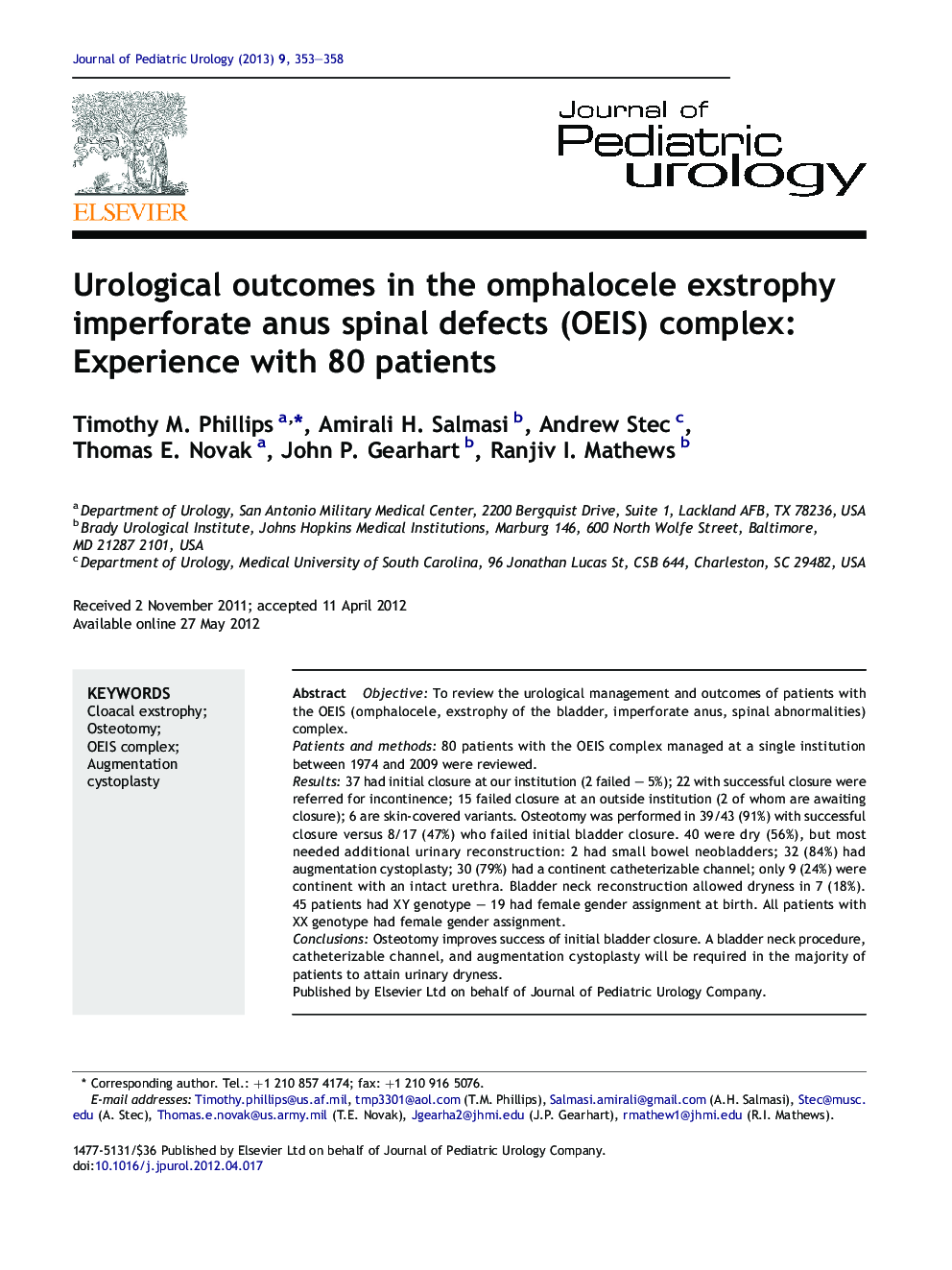| Article ID | Journal | Published Year | Pages | File Type |
|---|---|---|---|---|
| 4162694 | Journal of Pediatric Urology | 2013 | 6 Pages |
ObjectiveTo review the urological management and outcomes of patients with the OEIS (omphalocele, exstrophy of the bladder, imperforate anus, spinal abnormalities) complex.Patients and methods80 patients with the OEIS complex managed at a single institution between 1974 and 2009 were reviewed.Results37 had initial closure at our institution (2 failed – 5%); 22 with successful closure were referred for incontinence; 15 failed closure at an outside institution (2 of whom are awaiting closure); 6 are skin-covered variants. Osteotomy was performed in 39/43 (91%) with successful closure versus 8/17 (47%) who failed initial bladder closure. 40 were dry (56%), but most needed additional urinary reconstruction: 2 had small bowel neobladders; 32 (84%) had augmentation cystoplasty; 30 (79%) had a continent catheterizable channel; only 9 (24%) were continent with an intact urethra. Bladder neck reconstruction allowed dryness in 7 (18%). 45 patients had XY genotype – 19 had female gender assignment at birth. All patients with XX genotype had female gender assignment.ConclusionsOsteotomy improves success of initial bladder closure. A bladder neck procedure, catheterizable channel, and augmentation cystoplasty will be required in the majority of patients to attain urinary dryness.
